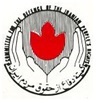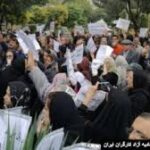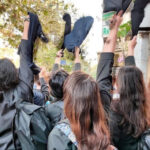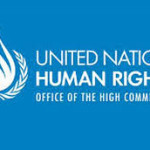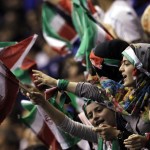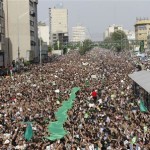
A year ago 22-year-old Mahsa Amini was murdered by Iran’s security services while in their custody. STEVE BISHOP assesses the build up to the anniversary and possible outcomes
N September 16 2022 Mahsa Amini was detained by the Iranian regime’s morality police for allegedly breaking the rules on what the regime deems to be appropriate dress for women.
Security forces claim that Amini suddenly collapsed from a heart attack at the detention centre, while receiving educational training on hijab rules.
This claim is disputed by Amini’s family, who say that she was perfectly healthy before her arrest.
The security forces’ version of events is further undermined by the account of Amini’s brother, Kiarash Amini, who was waiting outside the detention centre on the day of his sister’s arrest when he heard screaming from inside.
Following the arrival of an ambulance a witness coming out of the centre told him that security forces had killed a young woman inside.
The grip of the theocratic dictatorship, which has been in place in Iran since the early 1980s, has been tested over the past year, following the death in custody of Amini.
Protests have taken place across Iran. Demonstrations of opposition to the regime have extended beyond the major cities and into the traditionally more conservative small towns and the countryside.
The degree of rage outstrips that expressed following the rigged election of 2009 which handed the hard-line Mahmoud Ahmadinejad the presidency and spawned the Green Movement.
In particular, the death of Amini has tapped into a deep well of resentment felt by the women of Iran, who are increasingly frustrated by the restrictions imposed upon their economic and social activity by the regime and the lack of protection from domestic abuse.
The crackdown in October 2022, against protests following Amini’s death, saw 500 killed at the hands of the regime and over 20,000 arrested.
With the anniversary approaching, the regime’s morality police have stepped up,in the past two months, their activities to coincide with the dictatorship’s announcement of a fresh campaign to compel women to wear the hijab.
The draft law sets out a range of proposals, including “much longer prison terms for women who refuse to wear the veil, stiff new penalties for celebrities and businesses who flout the rules, and the use of artificial intelligence to identify women in breach of the dress code.”
The Bill is a warning to Iranians that the regime remains defiant in its medieval stance on the hijab, despite the rejection of such outdated and misogynist practices by thousands of Iranian women.
The new Bill defines “clothes that show a part of the body below the neck or above the ankles or above the forearms” and clothes that are “revealing or tight” as a violation of hijab.
Under the current “hijab law,” a breach of the dress code is punishable by 10 days to two months imprisonment, or a fine ranging from 50,000 to 500,000 Iranian rials (£0.93 to £9.30).
The new Bill would reclassify failure to wear the hijab as a more severe offence, punishable by a 5-10-year prison sentence as well as a higher fine of up to 360 million Iranian rials (£6,742). Given that the average salary in Iran is currently equivalent to £364 per month such a fine is clearly far beyond the affordability of an average Iranian.
The proposed legislation would require more gender segregation in colleges, which are often sites of civil unrest, and other public places.
The new law also proposes to impose steeper penalties on business owners who are lenient towards hijab-wearing. This could amount to three months of their business profit, travel bans, and restraints on participating in public or cyber activity for up to two years.
The regime has clearly initiated a crackdown in advance of the anniversary, with nearly 200 executions reported in the first half of this year alone. Executions resulting from charges such as “insulting the prophet,” “blasphemy,” “insulting the prophet’s mother” and “belittling the Koran.”
In addition, an increasing number of executions are being carried out for alleged “drug offences.” Under article 6(2) of the International Covenant on Civil and Political Rights, which Iran has ratified, in countries that still retain capital punishment, the death penalty may be applied only for the “most serious crimes.”
According to the UN Human Rights Committee drug offences are not among the “most serious crimes,” and the use of the death penalty for such crimes violates international law.
While Iranians continue to struggle due to the mismanagement of the economy, endemic corruption within the ruling clergy and the ongoing sanctions faced by the regime, hard-line President Ebrahim Raisi has allocated £3 million to the so called Initiative for Promotion of Virtue and Prevention of Vice to increase the surveillance of female employees at government agencies.
Raisi has also issued a clear warning to Iranian women that the hijab law will be enforced and claimed in a recent speech that women opposing the hijab were a “minority being trained by foreigners” with the objective of undermining the Iranian government.
The focus of the Iranian government on “hijab removal” is widely seen as an attempt by the regime to deflect attention away from the ongoing crisis which continues to grip Iran.
While the focus of international media has been upon women protesting against the hijab laws, general discontent among the working class, youth and students has been reflected in an ongoing wave of industrial disputes which have hit key sectors of the economy as well as the public sector.
Over the last six years, there have been many strikes in Iran. In the last year alone, there were around 1,200 across the country. There were popular uprisings in late 2017 well into early 2018 and then again in November 2019, all had the people’s material and economic demands at their centre.
Most recently pensioners have been publicly protesting about the shortfall in pension payments and government mismanagement of pension funds. Even official government reports indicate that 17 out of the 18 pension funds in Iran are either bankrupt or teetering on the very brink of becoming so.
In addition, a recent report from the Islamic Republic’s Labour Ministry revealed a huge increase in the rate of poverty in Iran, rising by 50 per cent in 2021 compared to the year before.
The first anniversary of Amini’s murder will undoubtedly be a focal point for all strands of opposition to the Islamic regime.
The current movement is increasingly demanding a root and branch overhaul of the Islamic Republic, in favour of a secular national democratic government.
It is becoming evident daily that the Iranian regime cannot resolve the deepening socio-economic crises it faces nor its own crisis of legitimacy and, sooner or later, will collapse opening the way for the Iranian people to establish a national democratic government.
Steve Bishop is a senior member of the central executive council of the Committee for the Defence of the Iranian People’s Rights and on the editorial board of Iran Today.
This article is published in Iran Today, the bulletin published by CODIR and also by Morning Star.



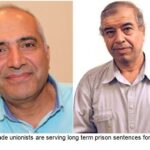


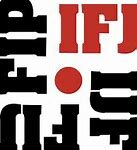




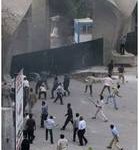
 Posted in
Posted in 